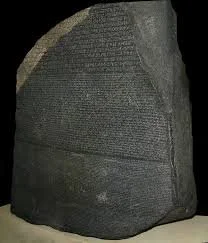Discovered in 1799 by French soldiers near the Egyptian town of Rosetta, the Rosetta Stone proved to be the key to unlocking ancient Egyptian hieroglyphs. The slab, carved in 196 BCE, features a decree written in three scripts: Greek, Demotic, and hieroglyphic. Because scholars could already read ancient Greek, the stone offered a comparative linguistic basis.
Jean-François Champollion made a breakthrough in 1822 when he deciphered the hieroglyphic script using the Greek and Demotic versions as a guide. His work revealed that hieroglyphs were not purely symbolic but also phonetic, revolutionizing the study of Egyptology.
The Rosetta Stone's significance lies not only in its content but in its function as a linguistic bridge. It allowed historians to access millennia of Egyptian history, religion, and culture previously locked away in undecipherable scripts. Today, the Rosetta Stone remains one of the most iconic artifacts in the British Museum.







